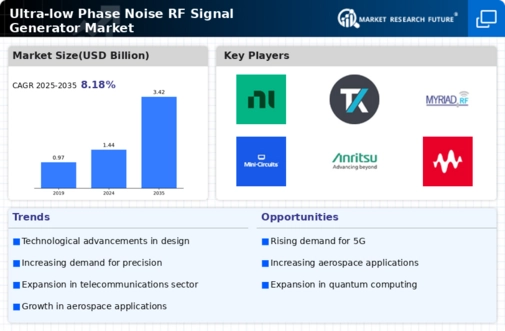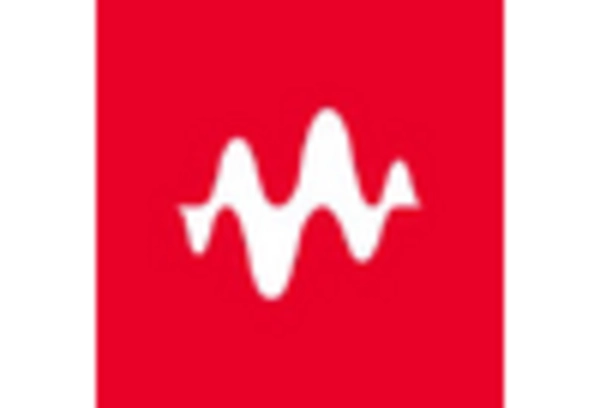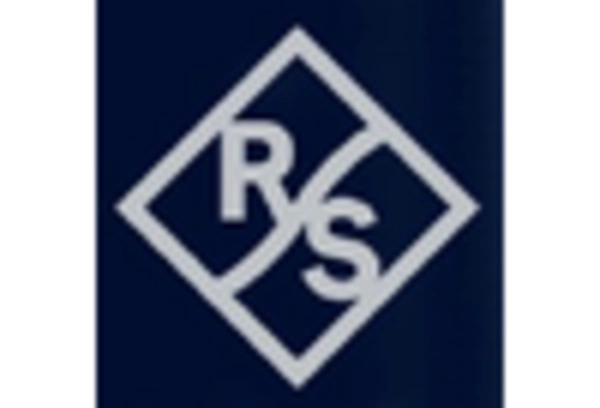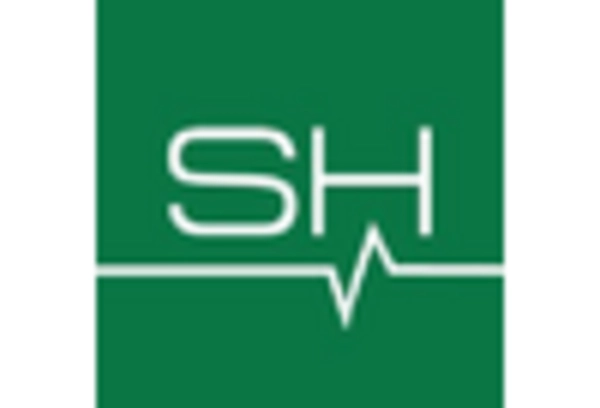Rising Demand in Telecommunications
The demand for Ultra-low Phase Noise RF Signal Generators is significantly influenced by the telecommunications sector. As the industry transitions towards 5G and beyond, the need for high-quality signal generation becomes paramount. Ultra-low phase noise is essential for maintaining signal integrity and minimizing interference in densely populated frequency bands. The Ultra-low Phase Noise RF Signal Generator Market is poised to benefit from this trend, as telecom operators and equipment manufacturers seek to enhance their network performance. With The Ultra-low Phase Noise RF Signal Generator expected to reach over 1 trillion USD by 2026, the demand for advanced RF signal generators is likely to increase, driving growth in this specialized market.
Growing Adoption in Consumer Electronics
The consumer electronics sector is gradually recognizing the importance of ultra-low phase noise in enhancing product performance. Devices such as smartphones, tablets, and smart home systems increasingly rely on high-quality RF signal generation for improved connectivity and user experience. The Ultra-low Phase Noise RF Signal Generator Market is likely to benefit from this trend, as manufacturers strive to incorporate advanced signal processing capabilities into their products. With the consumer electronics market projected to grow significantly in the coming years, the demand for ultra-low phase noise signal generators is expected to rise, driven by the need for superior performance and reliability in everyday devices.
Emerging Applications in Scientific Research
The Ultra-low Phase Noise RF Signal Generator Market is also benefiting from emerging applications in scientific research. Fields such as quantum computing, particle physics, and advanced materials research require highly stable and precise signal generation for experiments and measurements. As research institutions and universities increasingly adopt advanced RF technologies, the demand for ultra-low phase noise generators is expected to grow. This trend is supported by funding initiatives aimed at promoting scientific innovation and technological development. The market could see a notable expansion as researchers seek to leverage these advanced tools to push the boundaries of knowledge and discovery.
Increased Investment in Aerospace and Defense
The aerospace and defense sectors are significant contributors to the Ultra-low Phase Noise RF Signal Generator Market. These sectors require highly precise and reliable signal generation for applications such as radar, satellite communications, and electronic warfare. The increasing geopolitical tensions and the need for advanced defense systems are prompting governments to invest heavily in these areas. As a result, the demand for ultra-low phase noise signal generators is expected to rise, as they play a critical role in ensuring the effectiveness of military communications and surveillance systems. The market is likely to see a substantial increase in revenue, driven by these investments and the ongoing modernization of defense technologies.
Technological Advancements in RF Signal Generators
The Ultra-low Phase Noise RF Signal Generator Market is experiencing a surge in technological advancements that enhance performance and reliability. Innovations in semiconductor technology, such as the development of low-noise amplifiers and high-frequency oscillators, are driving the market forward. These advancements enable the generation of signals with minimal phase noise, which is crucial for applications in telecommunications and aerospace. As a result, manufacturers are increasingly investing in research and development to create next-generation signal generators that meet the stringent requirements of modern communication systems. The market is projected to grow at a compound annual growth rate of approximately 8% over the next five years, reflecting the increasing reliance on high-performance RF signal generation in various sectors.
















Leave a Comment